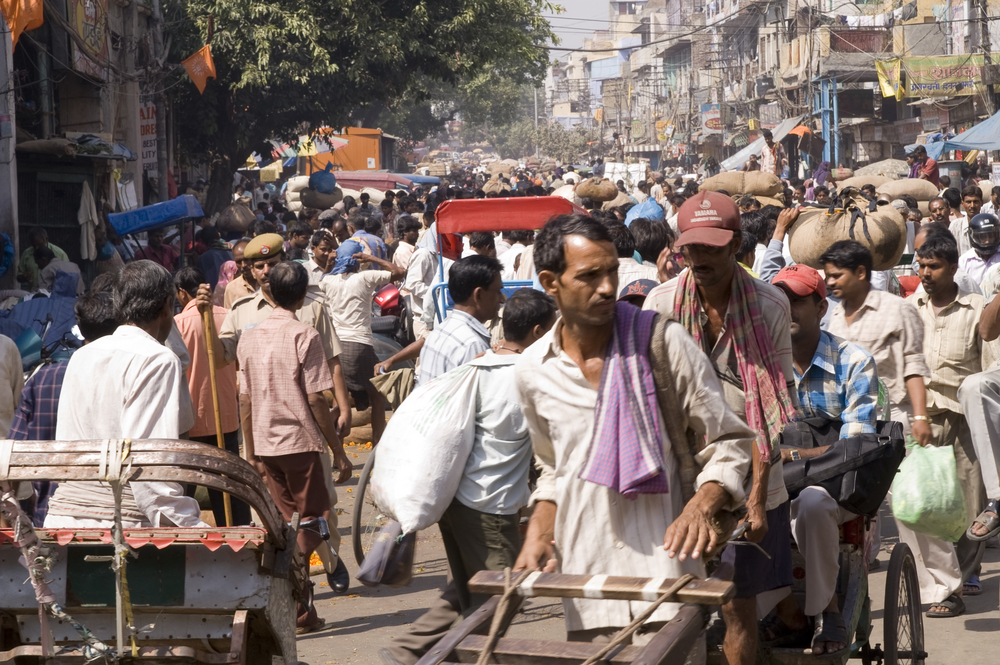
The caste system in South Asia — which rigidly separates people into high, middle and lower classes — may have been firmly entrenched by about 2,000 years ago, a new genetic analysis suggests.
Researchers found that people from different genetic populations in India began mixing about 4,200 years ago, but the mingling stopped around 1,900 years ago, according to the analysis published today (Aug. 8) in the American Journal of Human Genetics.
Combining this new genetic information with ancient texts, the results suggest that class distinctions emerged 3,000 to 3,500 years ago, and caste divisions became strict roughly two millennia ago.
Though relationships between people of different social groups was once common, there was a "transformation where most groups now practice endogamy," or marry within their group, said study co-author Priya Moorjani, a geneticist at Harvard University.
Ancestral populations
Hindus in India have historically been born into one of four major castes, with myriad subdivisions within each caste. Even today, in some parts of the country, marriage outside of one's caste is forbidden and those in the outcast, or "untouchable" group are discriminated against and prohibited from participating in religious rituals. (The Indian government has outlawed certain types of discrimination against the lowest classes.)
But when and why this system evolved has always been a bit murky, said Michael Witzel, a South Asian studies researcher at Harvard University, who was not involved in the work.
Moorjani's past research revealed that all people in India trace their heritage to two genetic groups: An ancestral North Indian group originally from the Near East and the Caucasus region, and another South Indian group that was more closely related to people on the Andaman Islands.
Get the world’s most fascinating discoveries delivered straight to your inbox.
Today, everyone in India has DNA from both groups. "It's just the proportion of ancestry that you have that varies across India," Moorjani told LiveScience.
To determine exactly when these ancient groups mixed, the team analyzed DNA from 371 people who were members of 73 groups throughout the subcontinent.
Aside from finding when the mixing started and stopped, the researchers also found the mixing was thorough, with even the most isolated tribes showing ancestry from both groups.
Period of transition
Researchers aren't sure which groups of ancient people lived in India prior to 4,200 years ago, but Moorjani suspects the two groups lived side-by-side for centuries without intermarrying.
Archaeological evidence indicates that the groups began intermarrying during a time of great upheaval. The Indus Valley civilization, which spanned much of modern-day North India and Pakistan, was waning, and huge migrations were occurring across North India. [History's Most Overlooked Mysteries]
Ancient texts also reveal clues about the period.
The Rigveda, a nearly 3,500-year-old collection of hymns written in Sanskrit, a North Indian language, mentions chieftains with South Indian names.
"So there is some sort of mixture or intermarriage," Witzel told LiveScience.
Early on, there were distinct classes of people — the priests, the nobility and the common people — but no mention of segregation or occupational restrictions. By about 3,000 years ago, the texts mention a fourth, lowest class: the Sudras. But it wasn't until about 100 B.C. that a holy text called the Manusmruti explicitly forbade intermarriage across castes.
The study doesn't suggest that either the ancestral North or South Indian group formed the bulk of the upper or lower castes, Witzel said.
Rather, when caste divisions hardened, any type of intermarriage was sharply curtailed, leading to much less mixing overall.
Originally published on Live Science.

Tia is the editor-in-chief (premium) and was formerly managing editor and senior writer for Live Science. Her work has appeared in Scientific American, Wired.com, Science News and other outlets. She holds a master's degree in bioengineering from the University of Washington, a graduate certificate in science writing from UC Santa Cruz and a bachelor's degree in mechanical engineering from the University of Texas at Austin. Tia was part of a team at the Milwaukee Journal Sentinel that published the Empty Cradles series on preterm births, which won multiple awards, including the 2012 Casey Medal for Meritorious Journalism.


